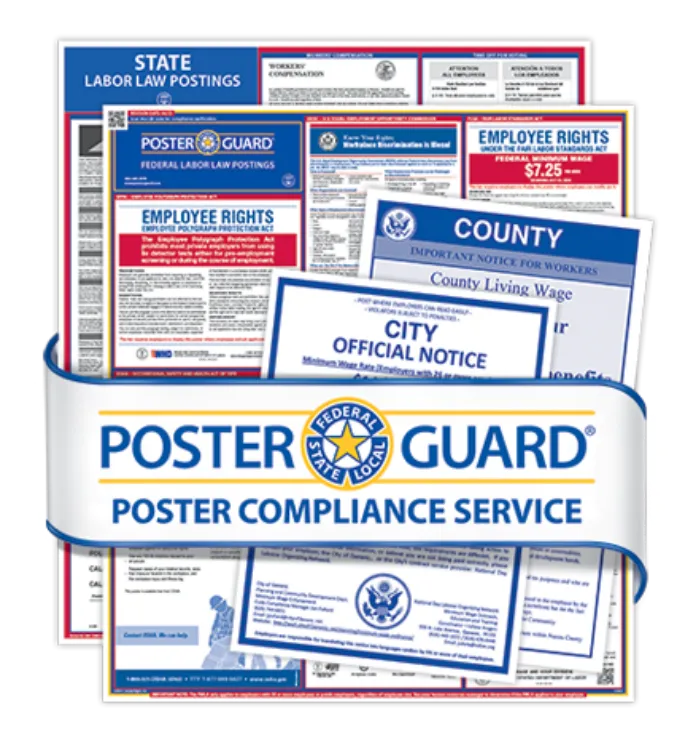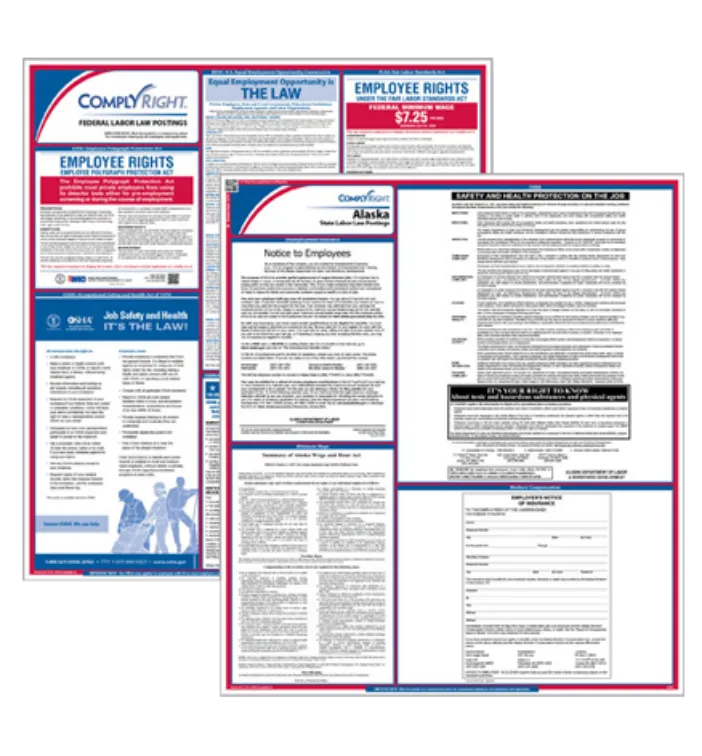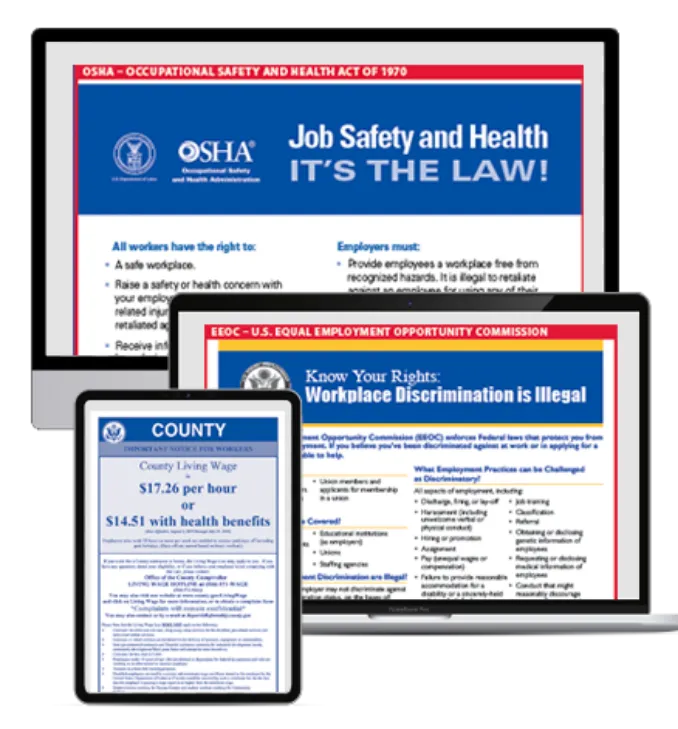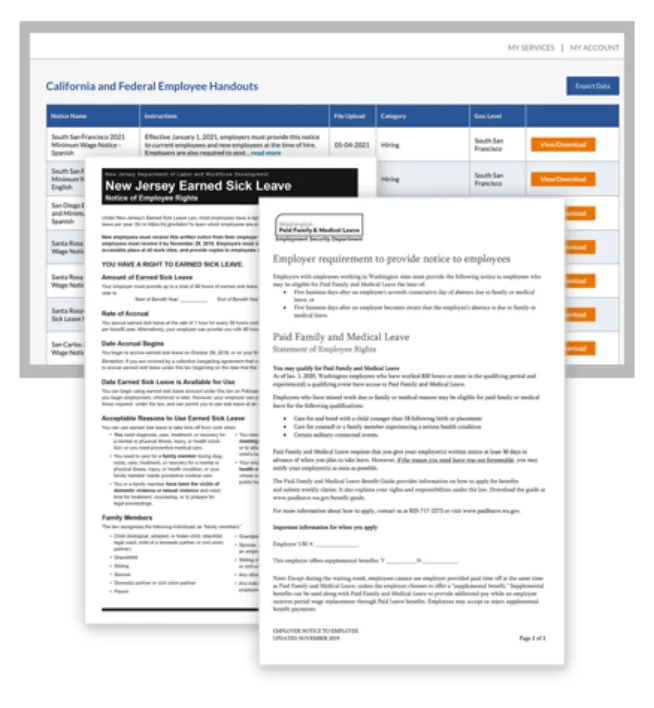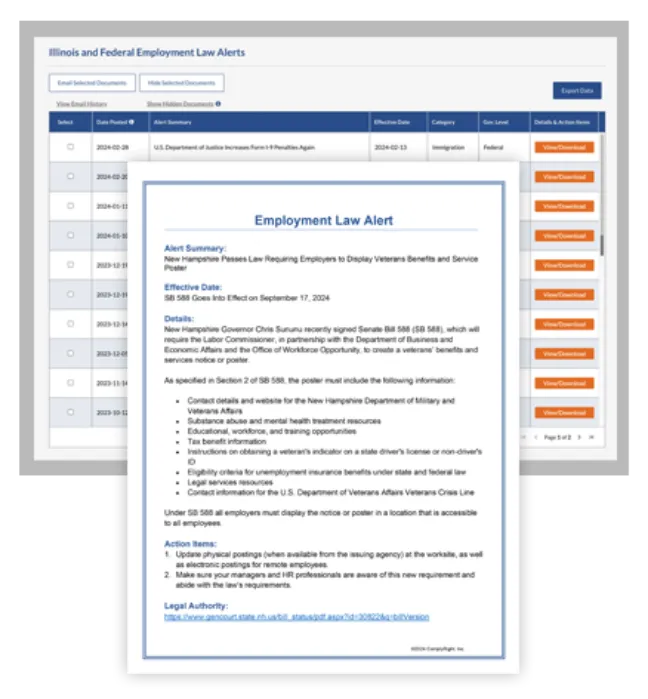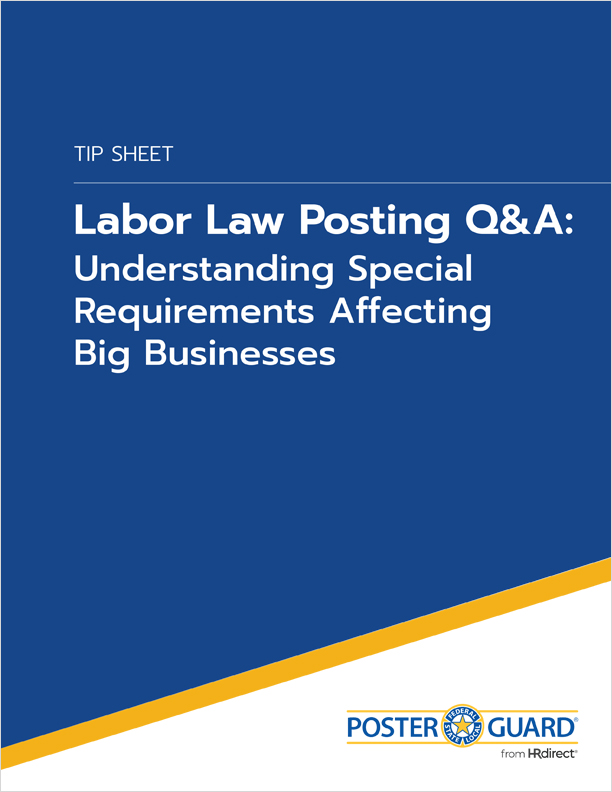Even as more companies return to the office full-time, remote work is here to stay. This shift continues to create new compliance challenges for employers, especially regarding sharing labor law information with all employees — whether they're on-site, hybrid or fully remote.
As you navigate a workforce with diverse work locations, here's the latest guidance from government agencies on compliance with labor law requirements.
Is Your Labor Law Posting Coverage Current?
By law, U.S. employers must ensure mandatory labor law information is accessible to every employee, not only those in the office. Federal agencies, like the Department of Labor (DOL), indicate that digital postings can supplement physical copies if employees are remote or split their time between home and office. DOL guidance further specifies that electronic postings should be made available to employees who don’t visit a location with physical postings at least 3-4 times per month.
To be clear: Hybrid workplaces require both physical postings at work locations and electronic copies for remote access. A fully digital approach is only acceptable if your entire workforce is remote, regularly receives updates electronically and has easy access to these postings.
Employers with hybrid or fully remote teams must meet complex, multi-state labor law posting requirements — or risk costly compliance issues.
Providing Multi-State Compliance for Remote Workers
For companies with remote employees across different states, meeting labor law posting requirements becomes more complex. Generally, the laws in the state where an employee works (not necessarily where they live) govern employment rights, like minimum wage and overtime.
Moreover, your business’s primary location may also impose compliance requirements. If your remote employees report to your main office but work from another state, the safest approach is to provide state-specific postings for both locations.
Avoid Off-the-Clock Work for Non-Exempt Remote Employees
In other compliance areas, the DOL emphasizes the importance of tracking hours and paying non-exempt (hourly) remote employees for all time worked. Here are some best practices:
- Explain expected work hours for remote employees
- Use an electronic system for clocking in and out, or weekly timesheets as an alternative
- Prohibit off-the-clock work, such as responding to emails or calls while not clocked in
- Require prior approval for any overtime
Clarification on FMLA Coverage for Remote Employees
Does FMLA apply to companies that operate entirely online? While we await further clarification from the DOL on this issue, employer law attorneys predict that FMLA eligibility might extend to fully remote workforces in the future. Until then, companies that deny FMLA leave to otherwise-qualified remote employees risk potential litigation.
The current FMLA criteria for employee eligibility include:
- 12 months of employment with the company
- A minimum of 1,250 hours worked in the past 12 months
- The employer has 50+ employees within a 75-mile radius of the work location
For remote employees, the designated work location is where they report and receive assignments, not necessarily their home office. This means a remote worker may still qualify for FMLA leave if the reporting office has 50+ employees within a 75-mile radius, provided the other eligibility requirements are met.
Complete Compliance for Remote Workers with Poster Guard® E-Service
Poster Guard® E-Service for Remote Workers offers a streamlined solution to keep remote employees informed of federal, state and local labor law postings. Remote employees can view required postings online and receive updates automatically whenever there’s a mandatory change. This comprehensive service includes tracking acknowledgment receipts and year-round monitoring by our in-house legal team, ensuring full compliance across all locations.

